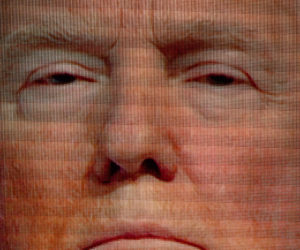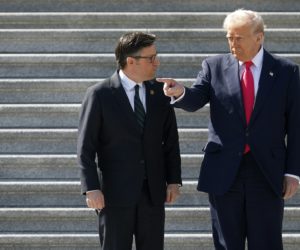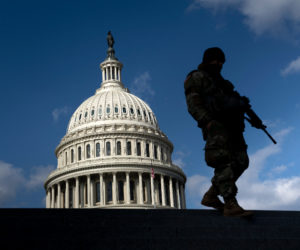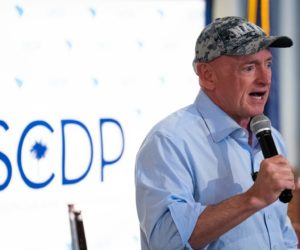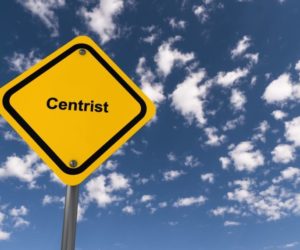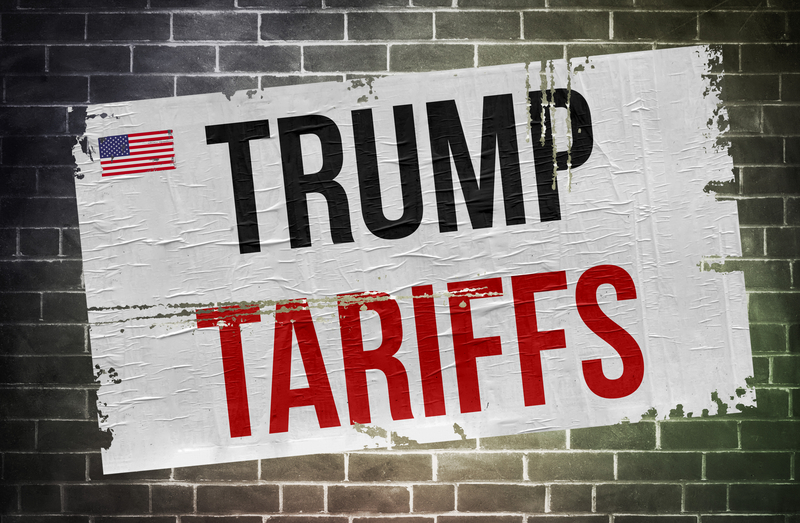
Upending Free Trade Won’t Help the Losers of Globalization
By Rick Wartzman
“We’re standing up for the American worker,” Donald Trump said from the Rose Garden during his “Liberation Day” address announcing sweeping new tariffs.
That’s no surprise. Upending the global trading system is a major goal for a key part of his political base: those walloped by free trade with low-wage countries—among them Mexico and, especially, China. These workers have been thirsting to bring back the good jobs they (or at least their parents) once had.
If only.
Populist rhetoric aside, Trump’s ham-fisted approach to tariffs is going to hurt workers, not help them. Despite putting a 90-day pause on most of his biggest tariffs, Trump still slapped China with a 145% tariff (while exempting computers, semiconductors, smartphones, and other electronics). Imports of steel, aluminum, autos, and auto parts are under 25% tariffs, and a baseline tariff on the vast majority of other imports remains a hefty 10%. Meanwhile, as tariffs dominate the headlines, his administration is quietly putting into place what can be best described as an anti-worker agenda.
It would be a mistake to blame globalization alone for the decline of U.S. factory jobs, which have been steadily shrinking as a share of total employment since the 1950s. Automation and the economy’s broader shift to services have contributed greatly.
Free trade also brings many advantages: low prices, consumer choice, economic efficiency, and more peaceful international relations.
Yet unbridled commerce with low-wage countries has unquestionably had serious downsides for many—not only for those Americans who’ve suddenly found themselves competing directly with foreign workers earning a small fraction of their pay, but for millions of others whose compensation has been squeezed in the process.
“While landscapers may not be displaced by imports, their wages suffer from having to compete with apparel (and auto, and steel) workers who have been displaced by imports,” Josh Bivens of the Economic Policy Institute has explained. “The wage-suppressing effects of globalization hit all workers without college degrees.”
If it is clear who has been harmed by free trade, it is equally apparent who has prospered the most: multinational companies that have moved operations abroad and their financiers. Other businesses have fattened their profits by wielding a threat over their front-line workers: Demand too much, and we’ll ship out your jobs.
For decades, both Republican and Democratic leaders largely ignored that globalization creates both winners and losers, insisting that free trade is favorable to everyone in the end.
Starting in the 1960s, a souped-up social safety net and retraining programs under the aegis of Trade Adjustment Assistance were intended to cushion the blow for those whose jobs disappeared. The North American Free Trade Agreement, which went into effect in 1994, came with a side agreement that was supposed to lift wages and beef up workers’ rights in Mexico, leveling the playing field for those north of the border. But TAA was never as strong as it needed to be before Congress let it die in 2022, and the NAFTA labor accord proved toothless.
Trump’s economic policies promise to leave workers even further behind. In just these first few months of his second term, the president and his team have tilted the National Labor Relations Board in favor of business interests that want to keep workers from unionizing, cut the minimum wage for hundreds of thousands of federal contractors (think janitors and food service employees), and eliminated a Biden-era order designed to improve job quality on federal infrastructure and energy projects.
All of this is squarely at odds with Trump’s vow to be “putting American workers first.” So are his tariffs.
Used strategically, tariffs can be an effective tool—a way to help a fledgling economy develop, allow a vulnerable sector to recover from a competitive shock, or strike back at countries that subsidize an industry or manipulate their currency to gain an unfair edge over domestic producers. Virtually all pickup trucks sold in the United States are built in North America, thanks to a 25% tariff levied by President Lyndon Johnson in 1963. The rise of South Korea’s industrial economy in the second half of the 20th century can be attributed, in part, to tariffs.
But tariffs are far from a magic bullet. Even in U.S. industries that have long been protected by import duties, such as textiles, jobs have not returned to America. The benefits of tariffs to, say, steel and aluminum producers are realized at the expense of other companies that rely on those materials. Small businesses that source from overseas may not survive. What’s more, tariffs leave exporters at risk of being retaliated against, as we’re witnessing in the trade war Trump has triggered.
Should Trump’s gambit somehow compel companies to manufacture more things in America, they won’t be cheap. Ed Gresser, director of trade and global markets at the Progressive Policy Institute, has estimated that reviving the U.S. production of toasters, as imagined by Vice President JD Vance, would drive the price of one to about $300. “In this case,” Gresser says, “lower-income families might find it impossible to afford appliances.”
All told, working families now face a rekindling of inflation; an assault on Social Security, Medicare, and Medicaid; and a new budget that proposes taking away health coverage and food assistance from millions of people. Tariffs themselves are considered a regressive tax because lower-income households tend to spend a relatively large portion of their earnings on goods that are subject to them.
Perhaps most perilous for workers, Trump’s overreach on trade has sharply increased the odds of a recession, which would spur unemployment. One-third of CEOs surveyed by CNBC after “Liberation Day” said they expected to slash jobs this year due to Trump’s tariffs.
When unemployment is low, workers acquire leverage in the labor market, pushing their pay higher—a dynamic that has helped the poorest-paid workers experience robust wage growth over the past five years. A tariff-induced downturn stands to undermine this crucial form of worker power.
Sitting in the audience at Trump’s “Liberation Day” speech were cheering members of the United Auto Workers—a testament to just how aggrieved many working-class Americans feel.
Improbably, Trump—who has denounced America’s trade deals since the 1980s—has always felt a special connection to this group. In 1990, during an interview with Playboy magazine in which he decried how cars imported from Japan had come to “knock the hell out of General Motors, Chrysler, and Ford,” he claimed that he had no plans to run for public office. But if he ever did, he knew exactly where he would draw support.
“The working guy would elect me. He likes me,” said Trump, who figured that, as a result, “I’d do better as a Democrat than as a Republican.”
Trump, of course, didn’t become a Democrat. Instead, he became a demagogue.
Rick Wartzman is the co-president of Bendable Labs and the author, most recently, of Still Broke: Walmart’s Remarkable Transformation and the Limits of Socially Conscious Capitalism. This was written for Zócalo Public Square.
ID 128370001 ©
Waingro | Dreamstime.com


